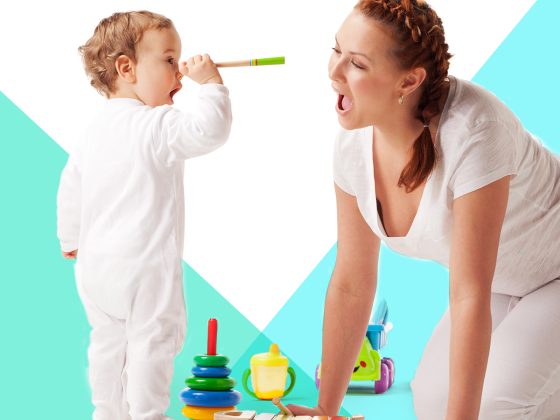
Exploration & Curiosity Milestones
Learn how curiosity and the drive to explore develop from birth through age 6.
Children are naturally curious from the day they are born! Adults can encourage their “drive to know” in simple ways during daily routines to boost brain development.
0-24 months: As you see babies trying to get things that are out of reach and put anything and everything into their mouths, you know that their curiosity about the world around them is in full swing! They’re busy absorbing everything and making connections based on what they see and hear. Before 12 months, you’ll see babies shake, bang, and throw things to figure out what they are. As they approach one year, they may begin to use objects correctly (for instance, drink from a cup rather than bang it). Repeating words in context will help babies learn (if their favorite book is about a bunny, and they hear the word “bunny” repeated when they see a real bunny, they’ll connect the word to the animal and eventually say it aloud themselves).
You can:
- Create a safe, open space for children to move around and explore.
- Read books together and talk about and name things around you!
2 years: Pulling out all of the tissues from the tissue box or opening and closing a door again and again are ways that children show curiosity about how things work. Curiosity hints to the brain that it should bring in and store new information. Children may also become more observant and imitate your faces and voice. For instance, they may talk on their play phone as you talk on your real phone. Imitating and practicing activities like this will help wire the brain to do these activities in real life.
You can:
- Encourage exploration by hiding toys around the room and asking your child to find them.
- Give children toys or objects that encourage pretend play and excite their imagination.
3 years: As language develops, children begin to ask endless “Why?” and “How?” questions: “Why is the sky blue?”; “Why do babies cry so much?”; “How can my fish live underwater?” Children may also begin to solve some problems and conflicts on their own (helping a sibling rebuild a block tower after accidentally knocking it down).
You can:
- Keep track of some of your child’s big questions throughout the day and try to find answers to them together by looking in a book or searching online.
- Build children’s imagination and critical-thinking skills by encouraging them to use props in pretend play. This will help them consider ideas that are not right in front of them.
4 years: Kids are eager to learn and may use new vocabulary to ask more detailed questions to find out answers. They are beginning to plan and may use drawings or act things out to represent ideas (e.g., seeing a truck outside and planning how to draw it).
You can:
- Create grocery lists together or a schedule for a weekend to practice making plans.
- As you do household chores, explain what you are doing and why, to offer information that might spark their interests.
5 and 6 years: Children may show interest in getting information from different resources (adults, books, TV) to find answers to their questions. They are also starting to think through problems, come up with more than one solution, and decide which solution is best.
You can:
- Help kids explore interests further. If they are interested in animals, visit the library to find books on animals or go online together to look at pictures of various animals.
- Encourage experimenting with different art supplies, such as paint, watercolor, clay, and so on.

Cultural Connections through Family Engagement for Building Stronger Bonds
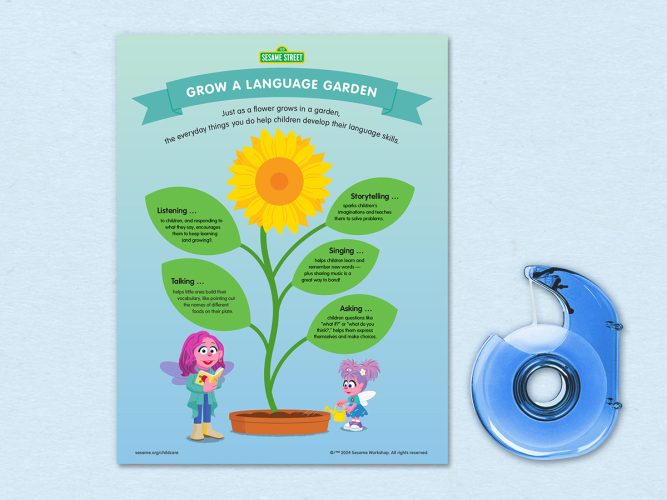
Growing a Language Garden: Everyday Language Development
A reminder of the simple things you do every day that nurture children’s language skills.

Tracking Child Development: A Caregiver’s Guide
Keeping track of milestones and going to routine screenings helps children stay healthy and thriving.
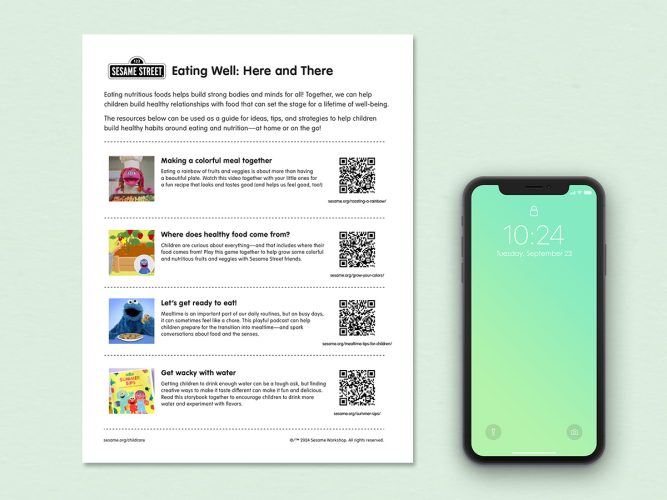
Eating Well: Here and There
A printable page with easily shareable resources to encourage children’s healthy relationships with food.
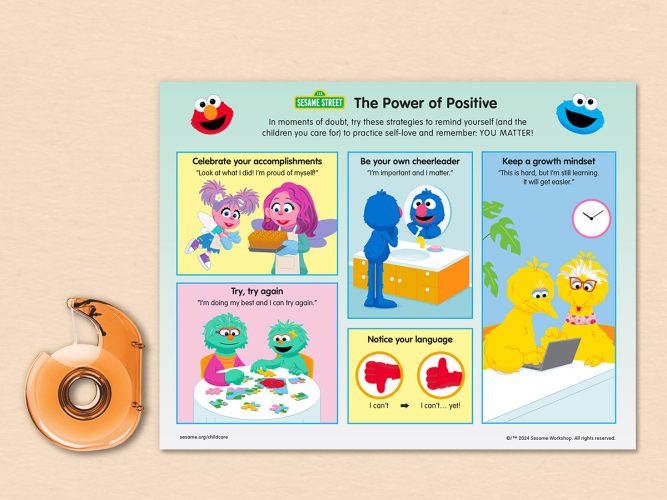
The Power of Positive
Gentle reminders for practicing self-kindness and compassion.

Routines to Help Children Rest and Sleep
Soothing, predictable, nap and bedtime routines can help children settle down for rest.
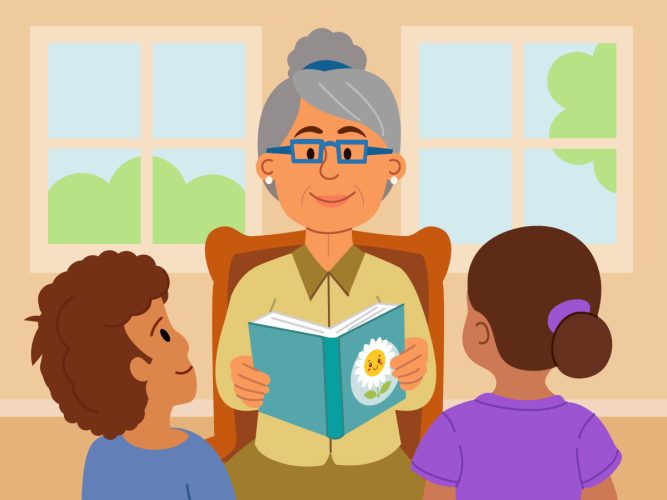
The Heart of Communities: Supporting and Celebrating Family, Friend, and Neighbor Caregivers
